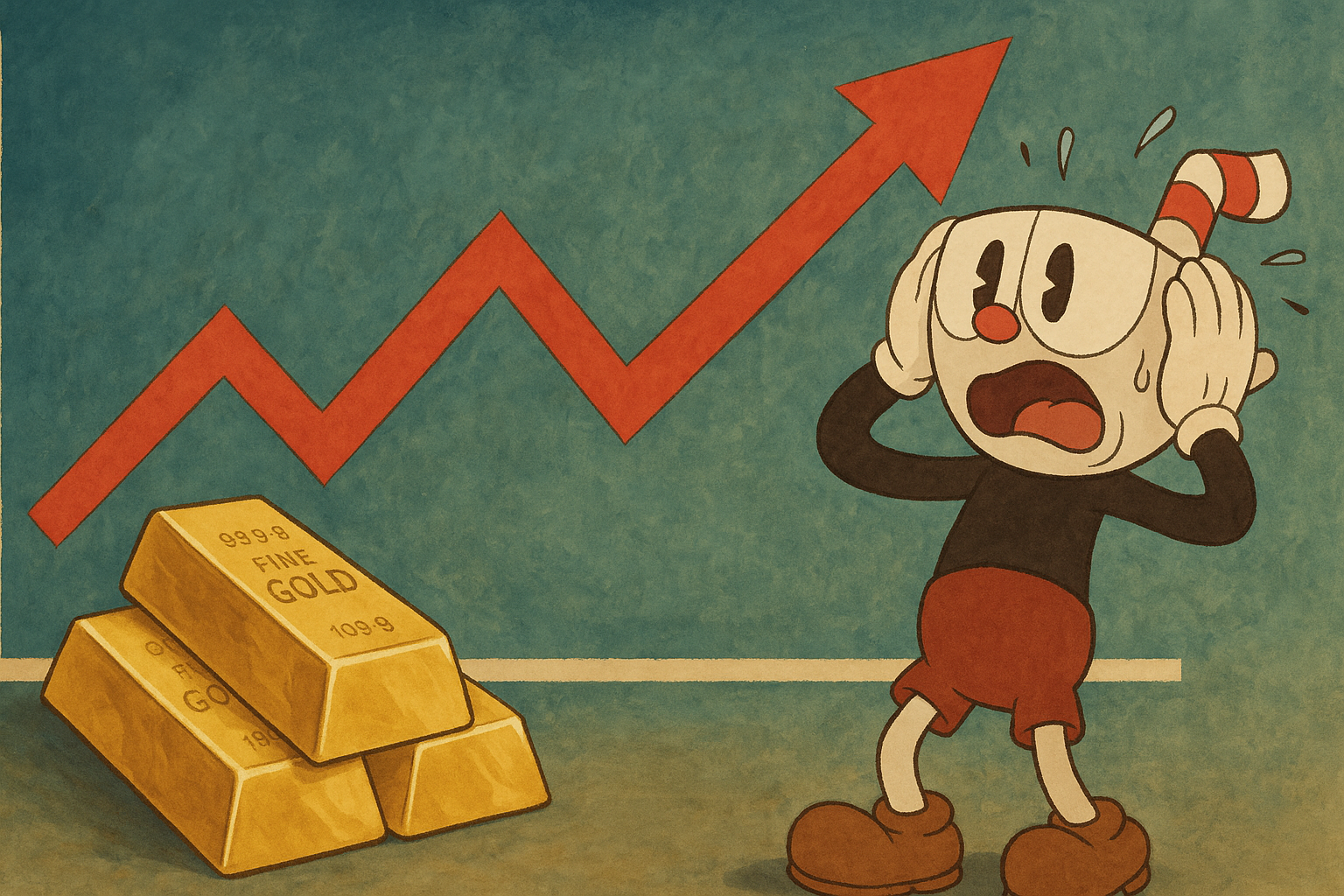
I'm Still Bullish on Gold
Gold has rallied by roughly 40% to 50% over the last four years. As of 2025, it's hit an all-time high of $3,500 — largely driven by global economic uncertainty and persistent inflation. In this article, I want to explain why I believe gold still has room to run over the next 5 to 10 years.
To be clear: this isn’t a prediction or a smug “I told you so” that’ll age like milk and quietly disappear if proven wrong. It’s just my outlook on the economy and why I think gold has further upside — even after the recent 2025 gold rush.
I’ll be laying it out in an oversimplified list — not (just) because I’m bad at writing, but because I want to make things easy to follow. After all, it’s not easy explaining the economic outlook from the brain of a 25-year-old unemployed shithead.
1) The End of Globalism
Globalism was built on the idea of shared strengths. You make cheaper shoes, I make better chips — we trade, we both win. Richer nations buy more from poorer ones, resulting in trade deficits. But that’s not exploitation — it’s just like how your ice cream seller has a trade surplus with you, the buyer. You get a treat, they get your money. Everyone’s happy.
That’s changing. With Trump’s presidency and the rise of protectionism, nations are starting to prioritize self-reliance. Tariffs and local manufacturing policies are on the rise — and that means higher prices across the board. In other words: inflation.
More countries are following suit, trying to bring supply chains back home. The age of “just-in-time” delivery and hyper-efficiency is being replaced by “just-in-case” stockpiling and redundancy. This shift doesn't just raise costs — it rewires how global commerce works. And gold? It thrives in this kind of uncertainty.
2) Debt — A Lot of It — and the Fall of U.S. Treasuries
The United States is a nation built on debt. Lots of it. These debts are issued in the form of government bonds — U.S. Treasuries. For decades, they’ve been considered the ultimate safe haven. Countries bought them by the boatload. Stable, secure, interest-bearing. What’s not to love?
Well... that sentiment is starting to crack.
In recent years, especially after 2022, countries like China have noticeably reduced their holdings of U.S. Treasuries. Why? Because the U.S. has been playing an increasingly aggressive geopolitical and financial game — freezing assets of foreign nations, weaponizing the dollar, and forcing global compliance through sanctions.
The message to the rest of the world has become clear: your money isn't safe in U.S. hands if you ever fall out of favor. That’s a huge red flag for sovereign nations.
This de-dollarization trend is slow but real. Nations are diversifying — into gold, into other currencies, and into alternative financial systems. Even U.S. debt itself is ballooning to levels that seem completely unpayable. The interest alone on the national debt is now one of the largest line items in the federal budget.
And when trust in U.S. Treasuries erodes, investors — both institutional and sovereign — start looking elsewhere for safety. Historically, that “elsewhere” has always included gold.
Conclusion: The Case for Gold Is Still Strong
We’re in a world that’s increasingly volatile, economically fragmented, and overloaded with debt. Inflation isn't going anywhere fast, the old global order is fraying at the edges, and even the most sacred financial assets like U.S. Treasuries are being questioned.
Gold doesn’t promise yield. It doesn’t pay dividends. But it doesn’t default. It doesn’t get frozen by sanctions. And it doesn’t care who’s president.
I’m not saying the price will go straight up forever. I’m not even saying to dump your savings into bullion. But what I am saying is that the case for owning gold today is stronger than it’s been in decades — not just as a short-term hedge, but as a long-term piece of any portfolio.
Call it doomerism. Call it prepping. Call it coping.
But for me? I’m still bullish on gold.